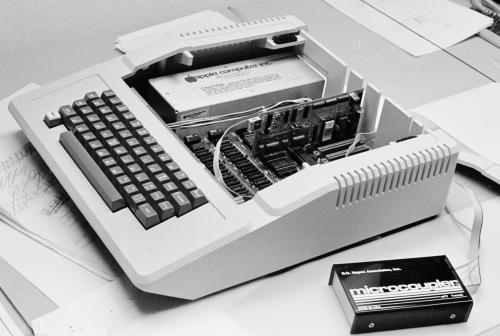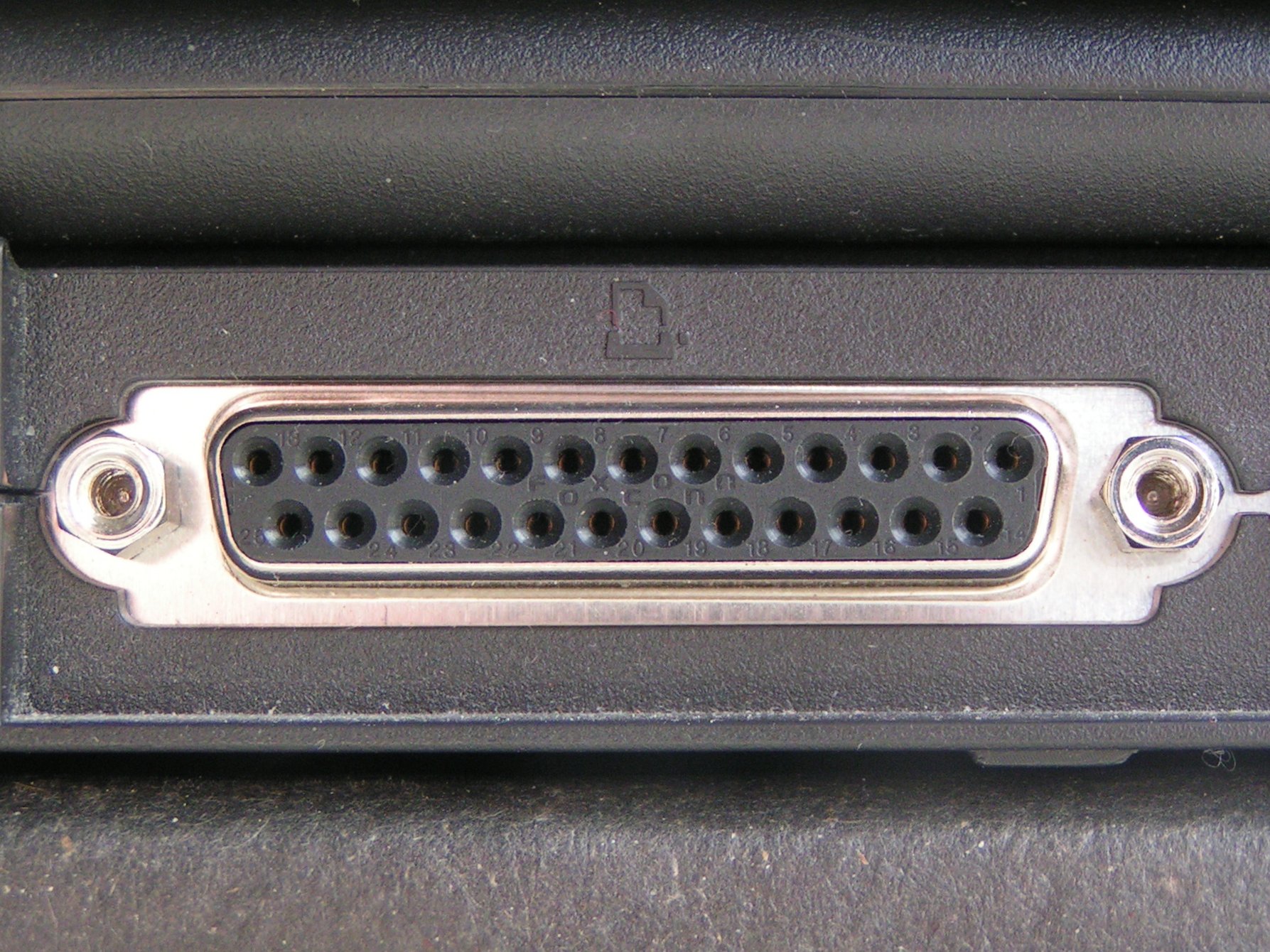|
Apple II
The Apple II (stylized as ) is an 8-bit home computer and one of the world's first highly successful mass-produced microcomputer products. It was designed primarily by Steve Wozniak; Jerry Manock developed the design of Apple II's foam-molded plastic case, Rod Holt developed the switching power supply, while Steve Jobs's role in the design of the computer was limited to overseeing Jerry Manock's work on the plastic case. It was introduced by Jobs and Wozniak at the 1977 West Coast Computer Faire, and marks Apple's first launch of a personal computer aimed at a consumer market—branded toward American households rather than businessmen or computer hobbyists. ''Byte'' magazine referred to the Apple II, Commodore PET 2001, and TRS-80 as the "1977 Trinity". As the Apple II had the defining feature of being able to display color graphics, the Apple logo was redesigned to have a spectrum of colors. The Apple II is the first model in the Apple II series, followed by App ... [...More Info...] [...Related Items...] OR: [Wikipedia] [Google] [Baidu] |
Apple Inc
Apple Inc. is an American multinational technology company headquartered in Cupertino, California, United States. Apple is the largest technology company by revenue (totaling in 2021) and, as of June 2022, is the world's biggest company by market capitalization, the fourth-largest personal computer vendor by unit sales and second-largest mobile phone manufacturer. It is one of the Big Five American information technology companies, alongside Alphabet, Amazon, Meta, and Microsoft. Apple was founded as Apple Computer Company on April 1, 1976, by Steve Wozniak, Steve Jobs and Ronald Wayne to develop and sell Wozniak's Apple I personal computer. It was incorporated by Jobs and Wozniak as Apple Computer, Inc. in 1977 and the company's next computer, the Apple II, became a best seller and one of the first mass-produced microcomputers. Apple went public in 1980 to instant financial success. The company developed computers featuring innovative graphical user interface ... [...More Info...] [...Related Items...] OR: [Wikipedia] [Google] [Baidu] |
Apple II Series
The Apple II series (trademarked with square brackets as "Apple ] ''" and rendered on later models as "Apple //") is a family of home computers, one of the first highly successful mass-produced microcomputer products, designed primarily by Steve Wozniak, manufactured by Apple Computer (now Apple Inc.), and launched in 1977 with the Apple II, original Apple II. In terms of ease of use, features, and expandability, the Apple II was a major advancement over its predecessor, the Apple I, a limited-production bare circuit board computer for electronics hobbyists. Through 1988, a number of models were introduced, with the most popular, the Apple IIe, remaining relatively unchanged into the 1990s. A model with more advanced graphics and sound and a 16-bit processor, the Apple IIGS, was added in 1986. It remained compatible with earlier Apple II models, but the IIGS had more in common with mid-1980s systems like the Atari ST, Amiga, and Acorn Archimedes. The Apple II w ... [...More Info...] [...Related Items...] OR: [Wikipedia] [Google] [Baidu] |
Integer BASIC
Integer BASIC is a BASIC interpreter written by Steve Wozniak for the Apple I and Apple II computers. Originally available on cassette for the Apple I in 1976, then included in ROM on the Apple II from its release in 1977, it was the first version of BASIC used by many early home computer owners. The only numeric data type was the integer; floating-point numbers were not supported. Using integers allowed numbers to be stored in a much more compact 16-bit format that could be more rapidly read and processed than the 32- or 40-bit floating-point formats found in most BASICs of the era. This made it so fast that Bill Gates complained when it outperformed Microsoft BASIC in benchmarks. However, this also limited its applicability as a general-purpose language. Another difference with other BASICs of the era is that Integer BASIC treated strings as arrays of characters, similar to the system in C or Fortran 77. Substrings were accessed using array slicing rather than string fun ... [...More Info...] [...Related Items...] OR: [Wikipedia] [Google] [Baidu] |
Parallel Port
In computing, a parallel port is a type of interface found on early computers (personal and otherwise) for connecting peripherals. The name refers to the way the data is sent; parallel ports send multiple bits of data at once (parallel communication), as opposed to serial communication, in which bits are sent one at a time. To do this, parallel ports require multiple data lines in their cables and port connectors and tend to be larger than contemporary serial ports, which only require one data line. There are many types of parallel ports, but the term has become most closely associated with the printer port or Centronics port found on most personal computers from the 1970s through the 2000s. It was an industry ''de facto'' standard for many years, and was finally standardized as IEEE 1284 in the late 1990s, which defined the Enhanced Parallel Port (EPP) and Extended Capability Port (ECP) bi-directional versions. Today, the parallel port interface is virtually non- ... [...More Info...] [...Related Items...] OR: [Wikipedia] [Google] [Baidu] |
Disk II
The Disk II Floppy Disk Subsystem, often rendered as Disk ] '', is a -inch floppy disk drive designed by controller card (which can control up to two drives) and cable. The Disk II was designed specifically for use with the Apple II">Disk controller">controller card (which can control up to two drives) and cable. The Disk II was designed specifically for use with the Apple II personal computer family to replace the slower Cassette tape#Data recording">cassette tape storage. These floppy drives cannot be used with any Macintosh without an Apple IIe Card as doing so will damage the drive or the controller. Apple produced at least six variants of the basic -inch Disk II concept over the course of the Apple II series' lifetime: The Disk II, the Disk III, the DuoDisk, the Disk IIc, the UniDisk 5.25" and the Apple 5.25 Drive. While all of these drives look different, and use four different connector types, they're all electronically extremely similar. They can all use the same low-lev ... [...More Info...] [...Related Items...] OR: [Wikipedia] [Google] [Baidu] |





